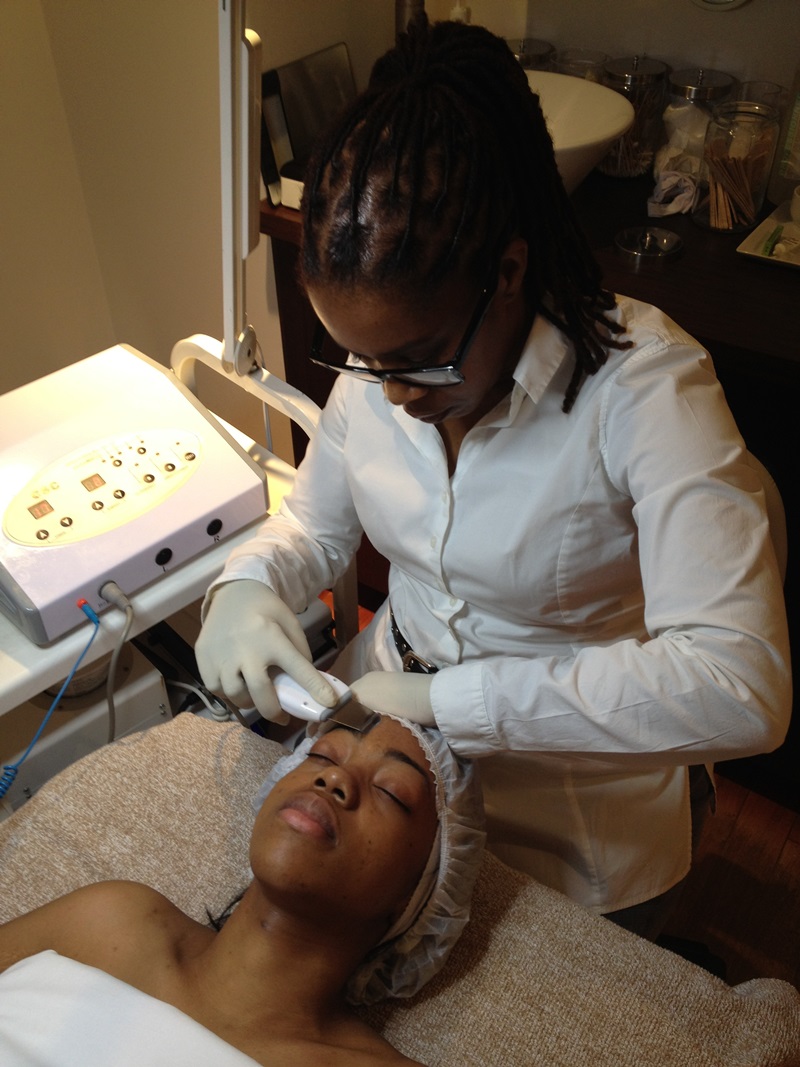
Years ago when I worked as an esthetician, every Thanksgiving Day I would hear “I can’t believe you have to work tomorrow” from well-meaning family and friends. Read More


Years ago when I worked as an esthetician, every Thanksgiving Day I would hear “I can’t believe you have to work tomorrow” from well-meaning family and friends. Read More

Your spa therapists are not selling your retail products. The same offerings that sit in your display cases and on your tables day after day are literally flying off the shelves at beauty outlets like Space NK, Sephora, Ulta and Blue Mercury ,both of which provide spa services. Ulta announced just last week that sales are so robust they’re building 100 more stores.
It’s obvious that your customers love purchasing beauty and body products. So the question is, why are you so reluctant to invest in training that teaches your team how to make retail recommendations and engage with your guests more easily? Read More

In bench-marking studies from the past year, the average retail revenues at Five-Star hotel spas ranged from 3% to 10%. It’s a shame because with retail profit margins higher than services, they have the potential to represent 20-35% of the overall revenue earnings.
Some exceptional examples in the industry like The Spa at Hershey and Gianni Versace’s spa actually have signature retail lines which provide a whopping 45% of their profit.
But both have a system of selling that is consistent and effectively in place.
At too many spas, there is inattention to the impact of everyday processes. Employees perform with comfortable repetition without examining the effects or implications of their actions to the larger picture.
Here are three of the most common mistakes resulting in millions of dollars in loss of potential revenue for international hotel brands.
1. Non-existent Retail Process
In various parts of the world, spa intake forms that customers painstakingly fill out are required only for government compliance.
Shockingly, they are not used to initiate guest conversation because the therapists are unable to speak the customer’s language. So the form is simply ignored.
And in its stead, no process is put in place to ensure smooth communication between the therapist and guest. No mechanism or liaison is provided which guarantees that the appropriate treatment and product recommendations are given.
Guests are allowed to leave the spa without closure aside from paying their bill. Discussions about follow up treatments or home care never take place. This often results in feelings of disappointment. Of having paid a premium price for an experience that was nothing special and therefore unnecessary to repeat.
2. Non-selling Massage Staff
How many of your massage therapists sell retail products? With the exception of cruise ships, many upscale spas give massage therapists a pass on product recommendations. In many cases products that are perfect accompaniments and home care solutions to massage treatments are sitting in plain view on the shelves but they’re never mentioned.
Product recommendation is an important component to personalizing a guest’s experience. It’s a powerful and effective way to differentiate your brand from the competition. It has also been proven to stimulate return visits and customer loyalty.
By allowing your massage team to by-pass this step, your spa is sending a message that your level of service is inconsistent according to the treatment selected, and that sub-standard service is OK.
3. Annual Therapist Training
Does your spa team receive product training once a year that substitutes for “customer training”? Are you satisfied with it because its “free”? Guess what; it really isn’t free. It’s costing you a lot.
Product knowledge can now be accessed by almost anyone if they have access to the internet. Your customers often come to the spa equipped with far more product knowledge than your therapists.
To be competitive in today’s spa market, therapists must bring a different more relevant set of customer information skill sets. This requires regular training, feedback and refreshers.
If you’re not showing them how to deliver the best customer experience through active listening, engagement, treatment and product personalization your organization is behind the times and losing ground on revenue and repeat business.
Have you made any changes to the way you’re doing business in 2016?